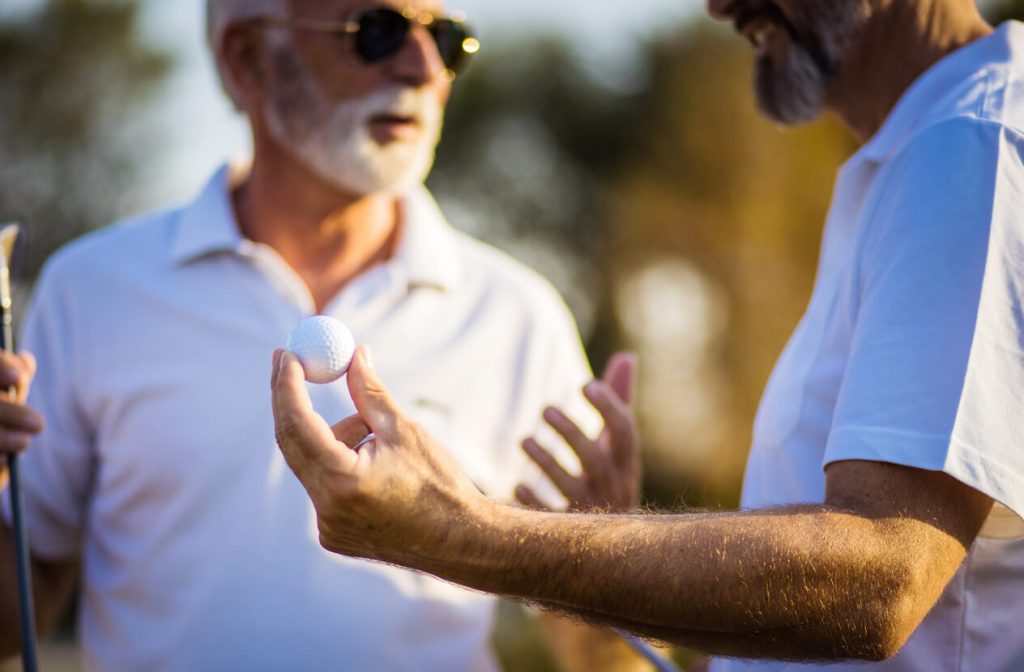Few things can be better than jetting off on a relaxing golf holiday in the summer sun. Be it in Europe or perhaps further afield, the best golf holidays all have a few things in common—gorgeous greens, challenging holes, and—of course—stunning views for that post-round drink.
If you’re thinking of taking your clubs on your next holiday, there are plenty of all-inclusive resorts around the world to choose from.
Here are the 10 best golf holidays and destinations for summer 2023.
1. Constance Belle Mare Plage, Mauritius
As golf holidays go, you can’t go wrong with this five-star resort in Mauritius. With two excellent golf courses (Links and Legend), white sandy beaches and clear blue skies, this island resort provides real escapism.
There are also multiple restaurants and bars, as well as a spa and a gym—so you’ll have plenty of opportunities to relax and unwind between your golf rounds.
Nearest airport: Sir Seewoosagur Ramgoolam International Airport (approx. 40 miles)
2. H10 Costa Adeje Palace, Tenerife
Located on the seafront, within 15 minutes of four golf courses, this resort occupies an idyllic part of Tenerife. There’s also a great line-up of bars and restaurants here to enjoy between rounds.
The resort’s all-inclusive packages include golf options at all its nearby courses.
Nearest airport: Tenerife Sur Reina Sofia Airport (approx. 13 miles)
3. Moon Palace Golf & Spa Resort, Mexico
Mexico might not be the first country you think of when it comes to the best golf holidays or destinations, but to describe the Moon Palace resort as luxurious would be an understatement.
Situated on the gorgeous Cancun beachfront, the resort is home to a 27-hole Jack Nicklaus Signature golf course. There are also various other golf courses dotted around the local area, perhaps most notably El Camaleón, currently a LIV Golf venue—the first of its kind in Latin America.
Nearest airport: Cancun International Airport (approx. 7 miles)
4. Lighthouse Golf & Spa Resort, Bulgaria
With its unique collection of courses, Bulgaria is fast becoming one of Europe’s best golf holidays. Not only does the Lighthouse Golf & Spa Resort have its own course, but it’s also only a short drive from Thracian Cliffs and Black Sea Rama Golf—two more courses offering a great experience.
The Lighthouse Resort offers packages with unlimited golf rounds.
Nearest airport: Varna International Airport (approx. 40 miles)
5. Barceló Bavaro Beach, Dominican Republic
This Caribbean hotel resort has placed the majority of its rooms facing the beachfront, so it’s the ideal place for sitting back and admiring the view.
It’s not a bad place for a golf holiday, either. The Lakes Barceló course, in particular, is one of the more recent additions to the Dominican Republic’s growing golf offering. You’ll find 25 inland lakes and 122 sand traps on this course!
Nearest airport: Punta Cana International Airport (approx. 13 miles)
6. Pestana Delfim Hotel, Portugal
The Algarve is renowned for its golfing experience—there’s no denying that Portugal is one of Europe’s best golf holidays.
This four-star hotel is located conveniently near several golf courses and one of the best beaches in the Algarve—Praia dos Três Irmãos. It’s also close to the beautiful town of Alvor, so there’s plenty to do both in and around the resort.
Nearest airport: Faro Airport (approx. 50 miles)
7. Mazagan Beach & Golf Resort, Morocco
This unique Moroccan resort has so much to offer. From fine dining, a nightclub and even a casino, you’ve got everything and more at your fingertips here.
When you book a stay at this all-inclusive resort, you can select an unlimited golf package for the Mazagan Golf Course, where you can play right next to the beachfront and soak in the views.
Nearest airport: Casablanca Airport (approx. 65 miles)
8. Sirene Golf Resort, Turkey
Sirene Golf Resort in Turkey has two of its own courses and is located close to the National Course. If you book a stay here, you’ll be able to get free transfers over to the National Course, so there’ll be plenty of opportunities to practice your golf.
Nearest airport: Antalya Airport (approx. 14 miles)
9. Marconfort Griego Hotel, Spain
This four-star hotel resort is one of only a handful of all-inclusive destinations in the Torremolinos area of the Costa del Sol.
With several golf courses dotted around the area and rounds included in the resort’s package options, it’s definitely a spot worth considering if golf holidays are your thing. Of course, you’ll also be very close to the beach so you can unwind after playing.
Nearest airport: Málaga Airport (approx. 5 miles)
10. Aphrodite Hills Hotel, Cyprus
Set in the Cyprus countryside overlooking the Mediterranean Coast, this stunning resort has plenty to offer people looking for that ideal summer getaway.
Located near the PGA National Cyprus, this resort should be on the bucket list of any keen golfer.
Nearest airport: Paphos Airport (approx. 7 miles)




















